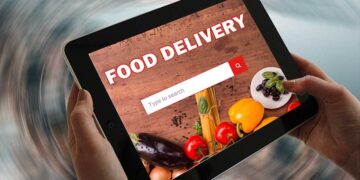In a world grappling with climate change, deforestation, and dwindling natural resources, our daily choices matter more than ever. One of the most significant impacts we can make on the environment lies in our food choices. Sustainable eating is not just a trend; it’s a necessity. By understanding the connection between our diets and the planet, we can take steps to minimize our ecological footprint and help save the world for future generations.
What is Sustainable Eating?
Sustainable eating is an approach to food and Firmafrokost Århus that considers the long-term health of the environment, people, and economies. It involves choosing foods that are not only nutritious but also produced in ways that protect ecosystems, reduce pollution, and conserve resources. The core principles of sustainable eating include:
- Reducing Food Waste:Nearly one-third of all food produced globally is wasted. This not only squanders resources but also contributes to greenhouse gas emissions from landfills.
- Eating Locally and Seasonally:Locally sourced and seasonal foods have a lower carbon footprint because they require less transportation and energy for production.
- Choosing Plant-Based Foods:Plant-based diets require fewer resources and produce fewer emissions than diets rich in animal products.
- Supporting Sustainable Farming Practices:This includes organic farming, regenerative agriculture, and other methods that preserve soil health, water quality, and biodiversity.
The Environmental Impact of Our Food Choices
The food system is a major driver of environmental degradation, contributing to deforestation, water scarcity, and climate change. Here’s how:
- Greenhouse Gas Emissions:Agriculture is responsible for about 24% of global greenhouse gas emissions. Livestock production, in particular, is a significant source of methane, a potent greenhouse gas.
- Land Use:The expansion of agricultural land is a leading cause of deforestation. Tropical forests, which are vital carbon sinks, are often cleared for cattle ranching or palm oil plantations.
- Water Consumption:Agriculture accounts for 70% of global freshwater use. Crops like almonds and rice require large amounts of water, often in regions already facing water scarcity.
- Biodiversity Loss:The conversion of natural habitats into farmland is the primary driver of biodiversity loss. Monocultures, such as soy and corn, reduce habitat diversity and harm wildlife.
How Sustainable Eating Can Make a Difference
By making conscious choices about what we eat, we can significantly reduce our environmental impact. Here’s how:
- Adopt a Plant-Based Diet:Shifting towards a plant-based diet is one of the most effective ways to reduce your carbon footprint. Plant-based foods generally require fewer resources to produce than animal products. For instance, producing one kilogram of beef emits approximately 60 kilograms of CO2-equivalents, while the same amount of peas emits only 1 kilogram.
- Support Local and Seasonal Foods:When you buy local and seasonal produce, you’re supporting farmers in your community and reducing the carbon footprint associated with transporting food long distances. Seasonal foods are also fresher and often more nutritious.
- Reduce Food Waste:By planning meals, storing food properly, and using leftovers creatively, you can reduce the amount of food that ends up in the trash. Composting food scraps is another way to reduce waste and return nutrients to the soil.
- Choose Sustainable Seafood:Overfishing and destructive fishing practices are depleting fish populations and damaging marine ecosystems. Opt for seafood that is certified by organizations like the Marine Stewardship Council (MSC) or look for the blue MSC label when shopping.
- Support Organic and Regenerative Agriculture:Organic farming avoids synthetic pesticides and fertilizers, which can harm the environment. Regenerative agriculture goes a step further by focusing on improving soil health, which can help sequester carbon and restore ecosystems.
The Role of Companies and Governments
While individual choices are crucial, systemic change is also needed to create a sustainable food system. Companies and governments play a vital role in this transformation.
- Corporate Responsibility:Food companies can adopt sustainable practices by sourcing ingredients responsibly, reducing waste, and minimizing packaging. Many companies are now committing to sustainable sourcing of palm oil, cocoa, and other ingredients linked to deforestation.
- Government Policies:Governments can support sustainable agriculture through subsidies, research, and education. Policies that encourage the reduction of food waste, support organic farming, and protect natural habitats are essential.
- Education and Awareness:Public awareness campaigns and education can empower consumers to make informed choices about what they eat. Schools, community groups, and media can play a key role in spreading the message about sustainable eating.
The Future of Sustainable Eating
As the global population continues to grow, the need for a sustainable food system becomes more urgent. Innovations in food technology, such as lab-grown meat and plant-based alternatives, are paving the way for a more sustainable future. Vertical farming, precision agriculture, and other technological advances are also helping to reduce the environmental impact of food production.
However, the most significant change will come from a collective shift in mindset. Sustainable eating requires us to think beyond our immediate needs and consider the long-term consequences of our choices. It’s about valuing the resources that go into our food and making choices that benefit not only ourselves but also the planet.
Practical Tips for Sustainable Eating
Here are some practical steps you can take to incorporate sustainable eating into your daily life:
- Plan Your Meals:By planning meals ahead of time, you can reduce the likelihood of buying unnecessary items and cut down on food waste.
- Eat More Plant-Based Meals:Start by incorporating one or two meatless meals into your week. Experiment with plant-based proteins like beans, lentils, and tofu.
- Buy in Bulk:Purchasing staples like grains, nuts, and seeds in bulk can reduce packaging waste and save money.
- Choose Eco-Friendly Packaging:Look for products with minimal packaging or packaging made from recycled materials. Bring your own bags, containers, and produce bags to the store.
- Support Farmers Markets:Buying directly from farmers supports local agriculture and reduces the carbon footprint associated with transporting food.
- Grow Your Own Food:Even if you have limited space, you can grow herbs, tomatoes, or salad greens at home. Gardening connects you with the food you eat and reduces the need for store-bought produce.
- Learn to Preserve Food:Canning, freezing, and drying are excellent ways to preserve seasonal produce and reduce waste.
- Be Mindful of Portion Sizes:Avoid overeating and reduce food waste by serving appropriate portions. If you find you’ve prepared too much, save leftovers for another meal.
Conclusion
Sustainable eating is not about making drastic changes overnight; it’s about making mindful choices that add up over time. Every small action, from choosing a plant-based meal to reducing food waste, contributes to a healthier planet. By understanding the impact of our food choices and taking steps towards sustainability, we can help ensure that future generations have access to the resources they need to thrive.
In the end, sustainable eating is about balance—balancing our nutritional needs with the health of the planet. It’s about choosing foods that nourish our bodies while respecting the Earth’s finite resources. As more people embrace sustainable eating, the cumulative effect will be profound, leading to a healthier planet and a more equitable food system for all








































